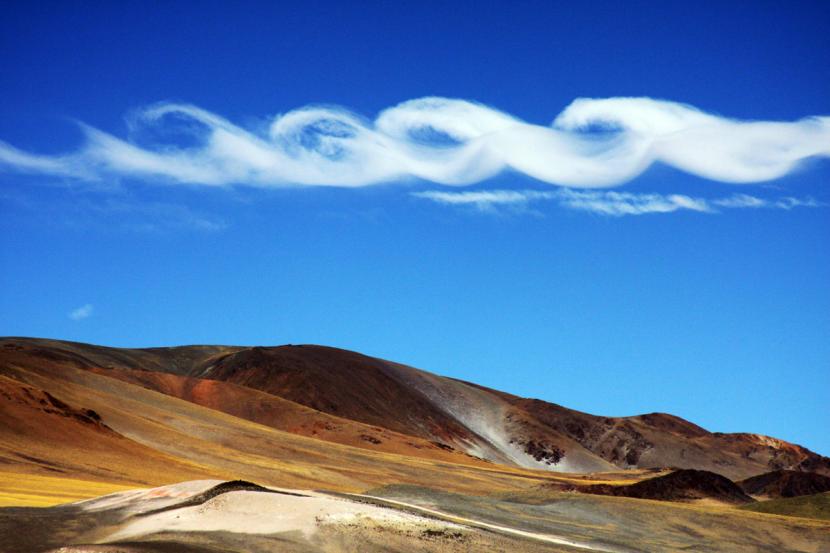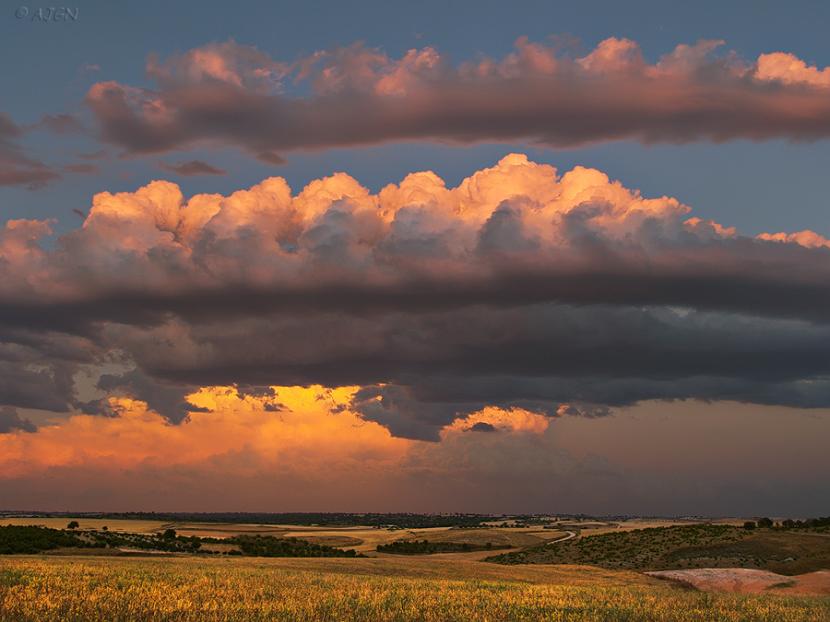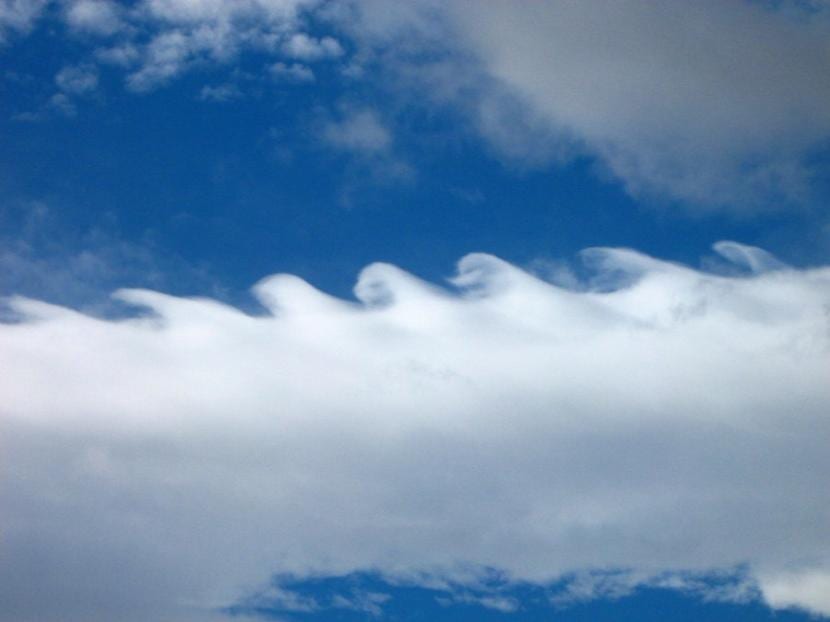
Nature is sometimes very curious. Although the normal thing would be to see waves in the sea, sometimes in the sky there are also waves. This instability is known by the name of Kelvin-Helmholtz clouds.
They are very rare, so whoever has the opportunity to see them should know that they last very little. So ... have your camera ready, or your notebook if you like to write novels, since these peculiar clouds can be a excellent source of inspiration, as they were for the painter Vincent Van Gogh.
Who discovered them and how are they formed?

Kelvin-Helmholtz clouds were discovered by the first Baron Kelvin, and by the physicist Hermann von Helmholtz. They look like waves breaking the ocean, right? Well, they actually form in a similar way. When the layer below is denser or has a slower speed than the one above, these wonders of the sky appear.
When do they see each other?
They form on very windy days, when air masses have a different density. They can also be seen for example during tropical cyclones.

As above, so below
And it is that thanks to the physics of this curious instability, weather satellites can measure wind speed over the oceans. Thus, they can more accurately know how high the waves will reach during a storm, for example.
Source of inspiration

The Starry Night, by Vincent Van Gogh
Did you think we were joking? Well, here's proof that Kelvin-Helmholtz clouds also serve as a source of inspiration. It is believed that they inspired the painter Vincent Van Gogh, thanks to which he created one of his masterpieces: The starry Night.
But, in addition, they could also inspire you to write a novel. Everything is a matter of imagination.
Have you ever seen these clouds? Did you know them?